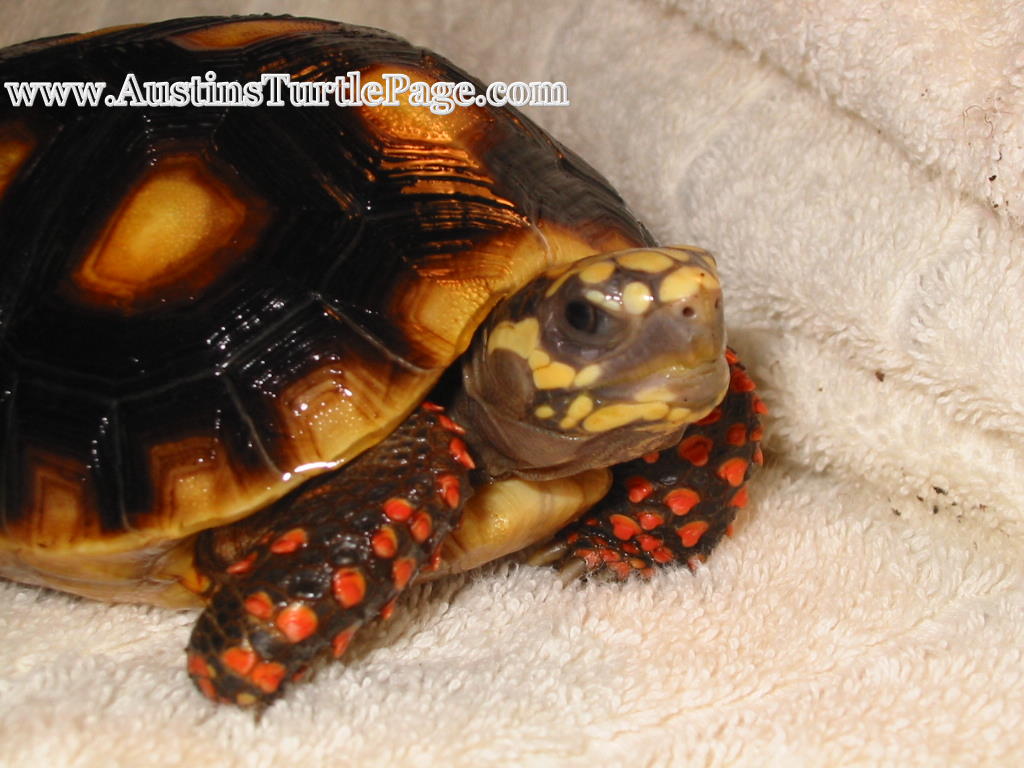|
 |
|
By Chris H |
Geochelone carbonaria
Male
20" in Length
Female
18" to 20" in length
These omnivores enjoy fruits, such as mango's, melons,
grapes, along with alfalfa, berries, grasses and dark green vegetables. In the
wild it has been known to eat some carrion.
Air Temperature:
Mid 80'
Humidity:
80%'
These tortoises thrive in a warm, humid
environment
South eastern Panama; East of the Andes
in Columbia, Venezuela, Bolivia, Paraguay, Northern Argentina, Guyana, and
Brazil.
NO
Red Foots prefer a more humid environment
than most of the other tortoises. Glass Aquariums are not recommended unless you
have tape or some material around the tank so the tortoise can see where it's
glass limits are. I would purchase an ultrasonic humidifier for the aquarium
with a timer. This will provide the indoor humidity this tortoise thrives for.
Rubbermaid Containers and outdoor pens are recommended. If you live in a warm
humid environment, a doghouse with an incandescent bulb works great for an
outdoor habitat.
Recommended size for a single adult
Red foot Tortoise - 4' x 8' pen
Recommended size for a single Hatchling
Red foot - 20 gallon to 50 gallon tank with UVB lighting.
In captivity, you should use mango's,
melons, grapes, along with alfalfa, berries, grasses and dark green vegetables,
along with Tortoise food. DO NOT overfeed your red foots though. If you do,
Shell pyramiding can become an issue.
Yellow Footed Tortoises are common with
Red foots. I wouldn't recommend any other tortoise.
Red Footed Tortoises are Hardy, Active,
And Friendly.